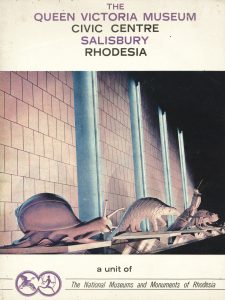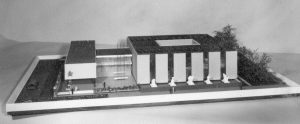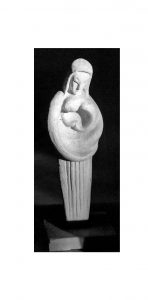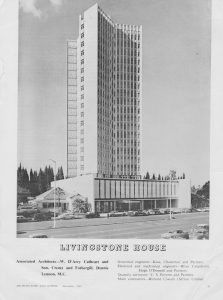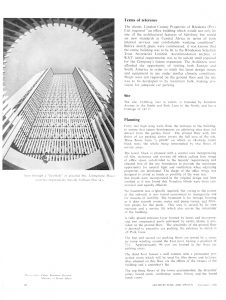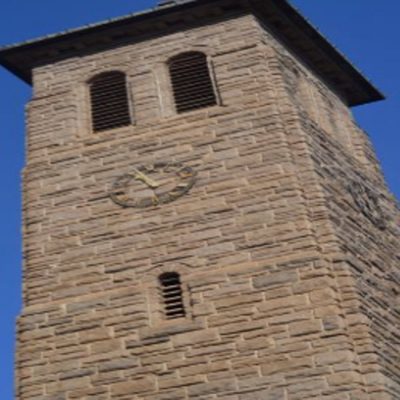Sculpture / Construction – Architectural / Interior (read more)
David Chudy’s public art works consisted of sculpture or bas-relief/friezes, mostly displayed in an architectural context.
The best known is a significant landmark in Harare: five large animals that front the Zimbabwe Museum of Human Sciences (formerly the Queen Victoria Museum).
A bronze wall-mounted sculpture at the Woolworth Building in Bulawayo, the country’s second city, is also a locally well-known work.
A number of stylized sculptures were commissioned and constructed, for display in churches. Friezes, shields. and trophy-like objects were also created for corporations or government. An 3D eagle was designed for the Royal Rhodesian Air Force.
The earliest known commission was a frieze for the Harare General Hospital in the early 50’s. The work, which was created in a naive style reflecting David Chudy’s early work, from Northern Rhodesia in the 40’s, featured cameos of African village scenes. The hospital at that time reflected racial divisions of the age. It;s clientele were exclusively black.
David Chudy’s approach to his public art works differed significantly from that which he applied to his own art. They were created and executed to satisfy a strict design brief. This brief had to be approved at various stages by an assigning party, who was normally an architect. David Chudy’s own work was created to satisfy his own curiosity.
David Chudy did not consider these pubic assignments to be experimental in any profound psychological sense, whereas his own work was nothing but. What others thought about his own art seems to have been immaterial to him, but it was a matter of professional pride to deliver a quality product for his clients.
The design and execution for public work was necessarily more controlled and finished than his own. The larger works were created with artisanal assistance at his own factory, whereas every brush stroke or sculptured shape in any of his own work was the direct product of his own hand.
The style of the public work is tighter. Although organic texture and controlled mess were key to his own art, most of the public art had a modern manufactured look with clean sweeping geometric lines, on which textures were smoothed away somewhat in the manner of automotive body panels. There is one common feature between the commercial and personal work, which is David Chudy’s attachment to Bézier style curves.
Other sculptural assignments involved the design and mass production of exterior tiles, as with the sable antelope motif, which faces a significant part of the exterior of the Salisbury (Harare) club.
His Woolworth ‘family sculpture’ appears to have been delivered as a plaster model to be cast in bronze in Europe. An illustrated newspaper cutting, featuring one of the following images, describes him as ‘putting the finishing touches to his work’ and the work is clearly plaster. This assignment preceded the establishment of David Chudy’s own local African foundry.
The construction of the animals outside the Zimbabwe Museum of Human Sciences was done by David Chudy’s company, Terrastone Ltd., as were most of the exterior facings on the entire building. The sculptures were necessarily hollow, with a steel core and concrete and brushed terrazzo exterior. They were constructed initially as miniature (approximately 1.5 meter) sculptures for client approval, before up-scaling by measurement and eye. Molds were made from full scale clay sculpted models.
